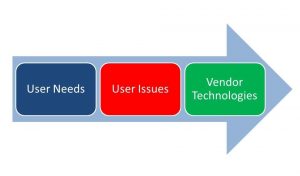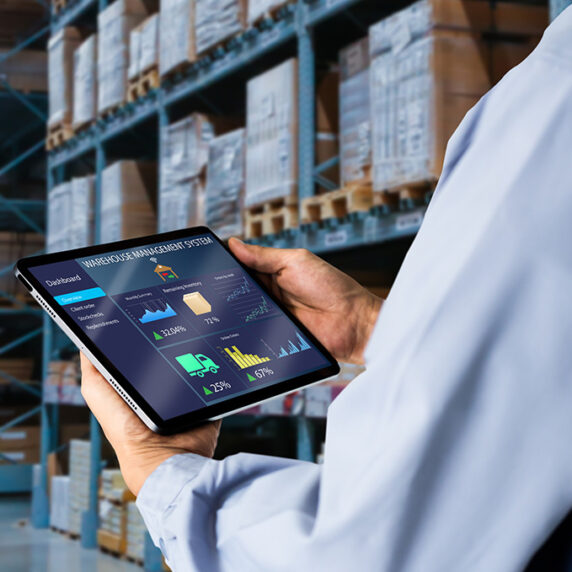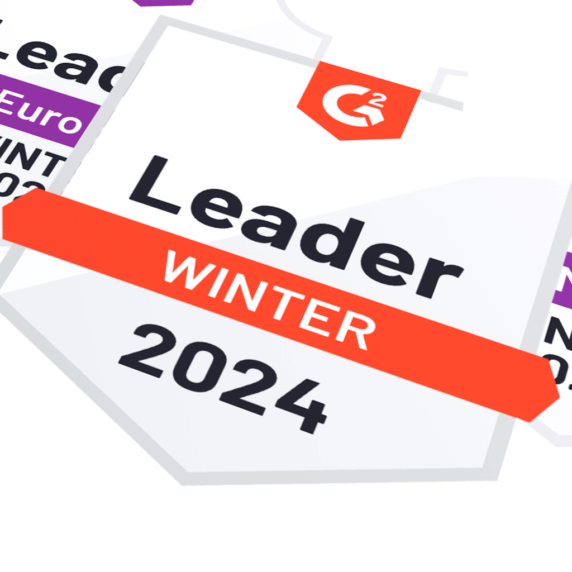A Detailed Look at What’s Driving Disruptive Innovation in Supply Chain Planning

Last week offered an overview of how disruptive innovation is changing the supply chain planning vendor landscape. We mentioned that Gartner said that this significant disruption was driven by end users’ changing priorities and needs. Today examine those drivers in more depth across three dimensions:
- Top 10 SCP Capabilities – Rated by End Users
- Top 10 Most Commonly Cited Issues by End Users
- Top 10 SCP Vendor Technology Evolutions to Address These Issues
In all cases we are using data from the most recent Supply Chain Planning (SCP) Magic Quadrant, either through direct quotes or paraphrasing. (All the bolding is mine.)
Top 10 SCP Capabilities – Rated by End Users
In the Magic Quadrant for Supply Chain Planning System of Record (January 19, 2016), Gartner surveyed 380 vendor reference companies about their SCP technology experiences and preferences. The top 10 technology capabilities those users identified as important to delivering their SCP goals were:
- “Ability to provide an integrated planning environment that allows for a single version of the truth for a supply chain
- Ability to easily integrate to all necessary transaction systems
- Functional depth of a vendor’s SCP solution
- Ability to plan very quickly across the supply chain network
- Ability to easily run reports or analytics on the planning data
- Ability to manage planning processes
- Functional breadth of a vendor’s SCP SOR solution
- Ability to easily design their own analytics or reports to run on the planning or transactional data
- Ability for relevant parties to easily view and collaborate on planning data
- Total Cost of Ownership”
Top 10 Most Commonly Cited Issues by End Users
Users also rated what they didn’t like about their current planning systems:
- “Too much planner intervention and not enough automation — resulting in low planner productivity.
- Not getting timely plans/scenarios — Plans are out of date by the time the planner sees them.
- SCP systems are not performing or scaling enough at the enterprise level, let alone at the multienterprise level.
- Planning is not granular enough to identify the real impact of execution events as they happen; resolution and time bucket aggregations obscure the real detail.
- Inability to support execution of the agreed business strategy — lack of automation, business rules and prioritizations in dealing with execution events, increasing the risk of decisions that deviate from corporate goals.
- Planning is too isolated from the execution environment — latency in decision making while waiting for the plan to update overnight or over the weekend
- Hard to get people to use and/or collaborate in the SCP system.
- Still too much Excel being used.
- Having to force-fit the SCP system’s process design to the organization — limits process improvement opportunities.
- Hard to try new ways of doing things.”
Top 10 SCP Vendor Technology Evolutions to Address These Issues
These issues, Gartner says, combined with the volatile and dynamic supply chain environments that many companies have to plan in, are driving several technology trends in the SCP market:
- “Consolidation and/or rewriting of previously separate modules into single unified planning solutions with horizontal and vertical integration”
- “The increasing use of cloud platforms to deliver scale, integration, collaboration and multienterprise capabilities to users. The emergence of public/community clouds in SCP hasn’t started to any great extent yet. Mostly it is private clouds.”
- “More extensive use of in-memory computing to help with planning speed, granularity and model adaptability, as well as to help drive convergence between planning and execution”
- “The use of Excel or Excel-like user interfaces to bolster and aid user adoption.”
- “Advanced predictive and prescriptive analytics to drive process automation and increased insight from planning and transactional data and to help better cope with increasing levels of volatility.”
- “The increasing emphasis on respond planning capabilities at an E2E level, as opposed to functional (for example, manufacturing scheduling or available-to-promise), to support simulations across the supply chain to identify appropriate resolutions in the short term.
- The evolution of more configurable solutions capable of adapting to the changing needs of the organization and its supply chain over time”
- “The increasing use of consumer-grade technologies (for example, technology used by the likes of Yahoo, Facebook and LinkedIn) to support scale, performance and adaptability.
- The increased use of mobility capabilities to support use of consumer-grade devices for collaboration, field support and overall adoption.
- A rebalancing of planning capabilities from being top-heavy in “optimize” toward more “respond” and “configure” planning capabilities — in support of abilities such as segmentation, better strategy execution, and the ability to respond more directly to actual near-real-time demand signals.”
This brings us full circle back to the reordering in the vendor landscape that we described last week. Changing user needs lead to new vendor technologies to address those needs and issues, which then lead to new market leaders. This, Gartner concludes, has allowed vendors “using new approaches and technology to help them leapfrog ahead in the market.”






